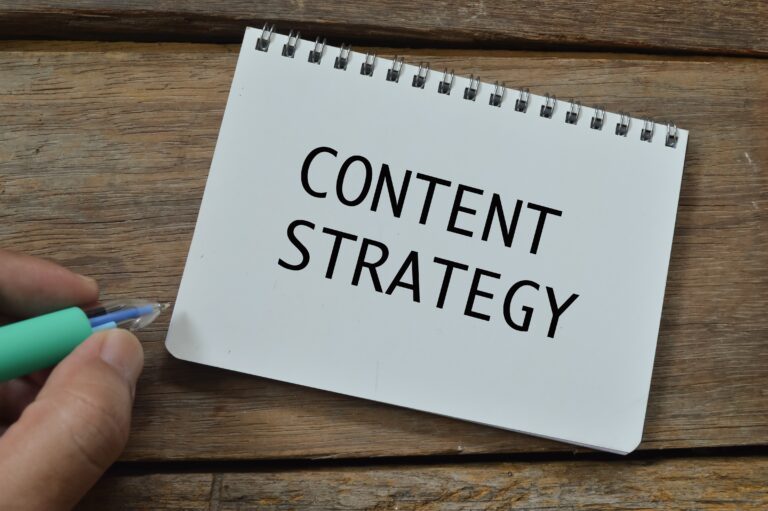If you’re of a certain age, you can probably remember how the web used to look – pretty bland and straightforward with minimal graphics. Then came the period of static pages and cookie-cutter templates with little room for personal creation. But the web is constantly evolving, and 2025 website design is more dynamic, strategic, and user-focused. Today’s modern web design allows you to embrace your brand’s aesthetics while employing smart functionality and streamlined performance to meet the demands of both users and search engines.
So, what does modern website design in 2025 actually look like? Let’s explore the latest trends, tools, and styles shaping the future of the digital experience.
1. Design that feels human
Unlike the sterile or corporate and cold feeling designs of the past, in 2025, web trends are embracing invitation, warmth, and personality. Many of these designs have a “scrapbook” inspired feel with layers, hand-drawn icons, photos or videos, and organic shapes and textures. These modern styles help brands stand out in a landscape where everything can look the same.
Still, these human-esque designs are far from chaotic or unprofessional. They’re cutting-edge and sleek, yet they have an element that makes them feel like they were made by people for people. Just as artificial intelligence (AI) is being utilized and integrated, a human-first approach must remain a core principle in website design.
2. Clean, functional layouts
Minimalism is still quite popular, but it has evolved. No longer is it defined by a lack of elements, which can make it feel uninviting and empty. Instead, modern minimalism focuses on intentional simplicity. There are fewer distractions on pages, and they have lots of negative space and clearly defined visual hierarchies.
Webpages must be overall functional, and clean designs with dynamic grids, floating UI elements, and oversized typography in bold fonts can help users find what they need faster, creating a more enjoyable and efficient experience across all devices.
3. Dark mode, motion, and micro-interactions
We love feeling in control, and this extends to our digital landscape. That’s why incorporating new elements that give users subtle feedback during their time spent on your page can make their experience unique. These can include things like:
- Dark mode toggles
- Scroll-triggered animations
- Button hover effects
- Parallax transitions
- Personalized greetings and UX
These trending elements make websites feel alive and interactive, without overwhelming users or bogging down performance.

4. AI-powered design and development
We briefly mentioned AI, but we would be remiss if it didn’t have its own section. After all, it isn’t just behind the scenes anymore. Tools like ChatGPT, Gemini, and generative UX platforms are now actively shaping the way sites are designed, written, and built.
In 2025, web designers are leveraging AI for everything from layout suggestions to instant content generation and accessibility audits. But as we highlighted previously, it’s not about removing creativity or the human touch. Incorporating AI should be about unlocking more time to focus on the big picture.
5. Accessibility isn’t optional
Accessibility is non-negotiable. Modern websites in 2025 must be designed for everyone, which means built-in accessibility features like:
- High-contrast color schemes
- Screen-reader compatibility
- Keyboard navigation
- Alt text and semantic HTML
While new legal standards have moved accessible design from a “nice to have” to a non-negotiable, this growing awareness and inclusivity are about more than following regulations. Accessible sites tend to perform better across the board and ensure that you’re reaching all of your possible audience.
6. Performance-first thinking
A website can be downright gorgeous, but if it’s slow and clunky, users won’t stay, engage, or convert. In short, fast is the new beautiful. Core Web Vitals (user-centered metrics) and load speed optimization remain key factors in Google rankings and user satisfaction. This means that things like images should be optimized, code minimized, and Content Delivery Networks (CDN) used to keep pages lightning fast. Web design in 2025 should be attractive as well as lean, responsive, and purposefully engineered to perform.
Modern can be trendy and strategic
It’s easy to chase every new web trend, but modern website design is about more than aesthetics. It’s about creating an experience that’s engaging, intuitive, and aligned with your goals. At Media Components, we build websites that go beyond looking great; they drive action. Whether you’re launching a new business or refreshing your existing presence, our team of expert web designers and developers can help you stay ahead of the curve. If you’re ready to modernize your website for 2025, contact us today to talk about your digital goals.





